We recently had the chance to catch up with Sean W. Karp, the sound-mixer and editor at children’s content studio Sinking Ship Productions. Over the past three years, Sean has been nominated for ten daytime Emmy Awards for his roles as sound editor and sound mixer, including four this year for his work on the series Annedroids, Dino Dana and Odd Squad. Here is what Sean shared with us about his interesting career:
Maybe we can start by you telling us how you get into the sound business for animation?
Sean: I first got into doing sound work for animation working on some dialogue for a number of 2D animated shows for a company called Super Sonics around 2001. I was just getting started doing post production sound for TV. The bulk of my experience at that point was with music. I went to one of the owners, Scott, to ask for some advice on how to approach a TV documentary I had attained to do an edit and mix on. He sat down with me for a few hours, went through my mix and he gave me some direction as to what I was doing right and what I should change. He then said he was looking for some freelancers to help with dialogue clean up and editorial on an animated series he was doing called Girl Stuff Boy Stuff. The job was to go through the dialogue edit of the studio VO records and clean up all the pops, ticks, and unwanted sounds to get them ready for the mix. It gave me a great education and experience in not only how to approach dialogue for animation, but dialogue in general.
What was your first job?
My first job working in the TV and Film sound industry was with a composer named Jack Lenz. When I connected with him, he had been around already for almost 30 years, starting in the mid 70s. I had just completed a year of schooling at the Harris Institute for the Arts in Audio Production and Engineering. The initial job was answering phones and acting as a Gofer. Jack’s operation at that time was made up of himself and about 4 other composers who all worked on MIDI systems producing music for the various shows Jack would bring in.
Within my first year there, outside of taking messages and picking up coffee and lunches, I would look to do anything I could in sound production/engineering for the company. I would do sound editing on already produced music, or small recording projects after hours that no one else wanted. Jack began to notice and was impressed with my work. He eventually approached me and said he had been thinking about putting together an in-house full service recording studio, to record and mix his own music, rather than doing live records in outside studios. He asked if I would design, purchase, and run this new endeavor. It was a huge opportunity; I was bit nervous, but I said yes and took it on for him. From there on, I was his main in-house sound engineer. At first, I was just recording and mixing music, but I soon expanded into editing and mixing full shows. Jack gave me my big first break, I will always be thankful to him for that.
What do you love about working for animated projects?
The best thing about working on animated projects is really that there are no boundaries to what one can create. Since we are not as bound to the reality of “our world” then the only thing holding us back is our imaginations. Anything the producers, writers, and directors can dream up is possible, and that of course translates to our job in bringing these worlds and stories to life through sound. What I love most about my work is the challenge of coming up with new ideas and approaches. trying to dream up something original, or at least something that expands in a new way or direction from what has been done in the past. With animated and CGI productions this opens up my world to infinite possibilities and challenges.
A great example would be the series Annedroides, which we did at Sinking Ship, about Anne, a young girl who lives in a junk yard, along with her friends that create amazing androids of different sizes and styles. They must keep them hidden from the rest of the world and go on adventures with them. There is the humanoid android Pal, a huge Crane-like android called Hand, and a small R2D2 type guy called Eyes. Each android has its own look, personality, and way of communicating. This provided me with the huge challenge of creating a sound palette for each character that fits with its look, and gave each one its own personality through sound design. I worked for months with JJ Johnson, the producer/creator of the show, and Matt Bishop, the head of animation at Sinking Ship. From scratch, I built up a sound personality for each character, including body movement sounds, alerts, and even different forms of speech.
Only in a world that is opened up with computer animations techniques, can I get to expand my craft and experiment in this stimulating and creative way! There are no limitations!
How is doing sound and sound editing for animation different than live-action projects?
For projects in a 2D animation or cartoon style, it’s a bit easier, in some ways, because you have full control, from the beginning, over your sound environment. All the dialogue is recorded in a studio, so it’s clean and doesn’t tend to have any background noise to deal with. With the sound editing, all your backgrounds and sound designs are built up and decided upon from the beginning. Ultimately there are no inherit problems to work out first before moving to the creative aspect of the job. The challenge with this is, of course, that you have to create everything from scratch. You aren’t given anything to build on top of, or give you some direction as with live dramatic production.
With CGI applied to live action productions, like Dino Dana and many of the other shows we do at Sinking Ship, there are a number of challenges to overcome. Again, we have the issues of unwanted background noise in the live production aspects of the dialogue that we need to clean up and smooth out. Also, we have to find ways to blend in our sound design for the CGI characters with the live action aspects of the show. We create the sense that everything is really happening in that real space, and not superimposed on top of the real shots that were filmed. Much like the animation itself, it takes a lot of effort to make everything blend together, and sell it as one solid real moment in the story telling. The animation needs the sound design and mix to ground it in reality, when this is executed well, a whole new world is brought to life.
What would you say is the hardest part of your job?
In a way, the toughest aspect of my work with animation is also what can make it so exciting. As mentioned with CGI and live action, trying to find that right blend of sound design and mix approaches that grounds the animation aspects of the productions with the live action can take a lot of time, with trial and error before you find just the right blend and fit. But when you do it’s a great feeling. You really get a sense that you have birthed a new world or experience that wasn’t there before. It’s a team effort between the animators and the sound designers to create something solid and real.
Another tough challenge has been developing speech aspects for many of the animated characters in our shows. For example, with Dino Dana, JJ Johnson likes each dino to have it’s own way of communicating with Dana and the audience through its grunts and roars. This also takes a good amount of time to work out. To find the right sounds that are new and fresh, but also familiar enough to evoke the emotion, or meaning we want to get across. Even though we have to keep this kind of dialogue fairly simple and straight forward since the dinos can’t use words. With enough time, effort, and experimentation, we are able to get across some fairly complex ideas and motivations from the dinosaurs that both adults and children can clearly understand.
What are some of your favorite movies and/or TV shows with amazing sound work?
Best sound ever is a tough one. So much of what we do is subjective so I think it can be dangerous to make a statement like that. I would have to say that, for overall sound design that’s really pivotal to a the film, it would have to be Star Wars. I know it’s an obvious choice, but it really did open up the world of sound design in really amazing ways that, to this day, we are still seeing play out. It was such an influential film.
For animation, I have to go way, way back to Fantasia. I remember my dad taking me to see that in the theatre when I was a kid in the 70’s. A lot of it was a bit slow, but there were moments like The Sorcerer’s Apprentice and the huge demon in the end that really stuck with me. It was such a pivotal moment in film making, showing the power of music and animation. When I saw it years later, I realized that, for its time, it really was a sort of experiment in how sound, music and animation could marry together. I think that experiment ended up having a huge influence on film making over all.
What tools do you use in your day to day work?
Many of the tools we use today are really just digital versions of gear and techniques that have been around for decades. Even though everything happens in computers now, a large portion of those digital tools are simply algorithms of equipment– like EQ’s and compressors, etc.– basically, audio gear from analog days that were used to shape and control raw sound. There is no doubt that the digital revolution has opened up what can be done with sound in amazing ways that were impossible 20 odd years ago. Even just the nonlinear approach to what we can do now with sound makes it so flexible and open to new ideas.
Like most pro sound studios, I work on Pro Tools. Most of my plug-ins are WAVES compressors and EQ’s. I also like Audio RX for sound restoration and clean up.
Really though, I don’t think it matters what software package you use. It’s really about your approach and how you look at the work you’re doing. Software is just a tool like any other. What really matters, is the person holding the tool and what they choose to do with it. Is a hammer just for hammering nails, or can it be used to help chisel out a statue? I remember early in my career doing a music project. Another engineer who was known as big music producer with a lot of success was using a software package called Cakewalk. It was known as a beginner’s kind of software for music recording and mixing, but that’s what he had learnt on, and that’s what he stuck with, and it worked for him. That experience taught me a lot about not focusing on software or gear but on the person, and the imagination they put into that gear.
The most important thing for getting a great result in sound work isn’t the gear or software you use, but the people you work with. At Sinking Ship, I have built up a fantastic team of young skilled professions, who all bring their own unique ideas into building the soundscapes to these amazing shows. My core team consists of Noah Siegel, Will Preventis, Blag Ahilov, and Charles Duchesne. I try to create an environment where everyone can bounce ideas off one another, and build off of each other’s skills.
What kind of advice would you give folks who want to work in sound for animation?
I would give the same advice I would give for anyone trying to do anything creative. Don’t hold yourself back, be open to new possibilities or ways of doing things. That doesn’t mean you reject what has been established in the past by other artists. I think you have to build on top of what was done before you. Move forward with it and try to put a bit of yourself in your creative process. There are rules to what we do, and we have to understand those rules and why they are there. But once you understand them, you can break them or create new rules.
Also, remember that we are artists and creators, and that this is fun. Have fun with what you do, enjoy it, play. It is through play that our imagination brightens up, and we come up with fresh ideas. So, when possible, try to keep that little kid inside of you around. That kid will take you in directions the adult wouldn’t think to go, and that’s where really interesting things can happen!
For more info about the studio, visit www.sinkingshipproductions.com
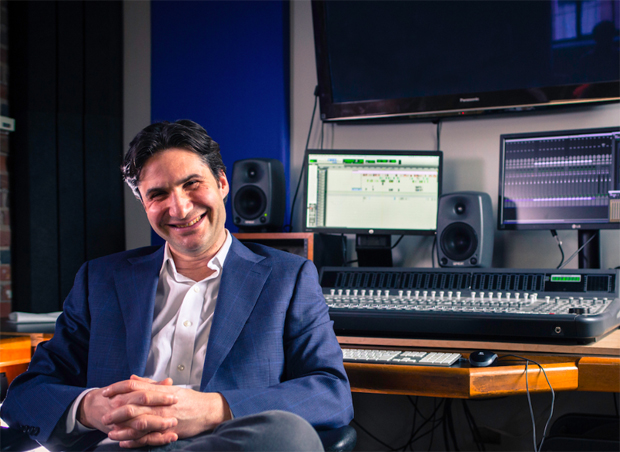
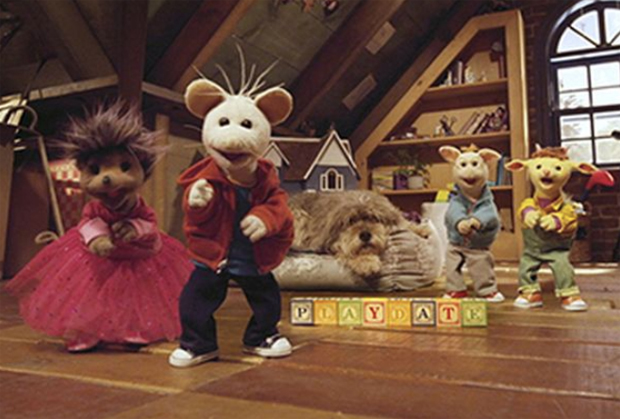
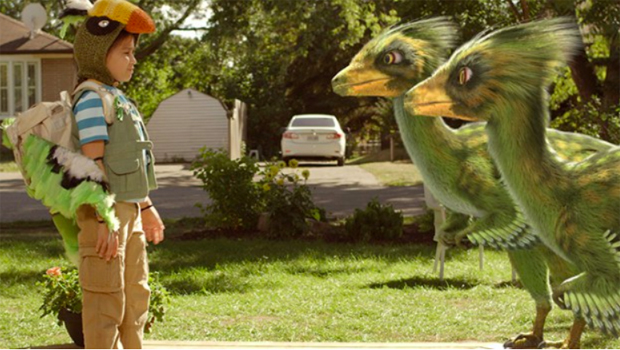
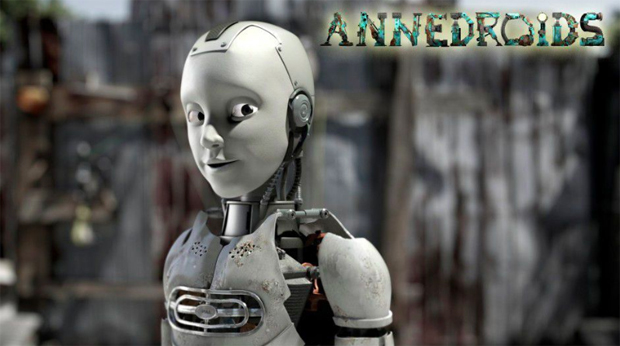


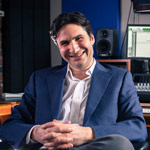

 Win a Funko X Lilo & Stitch Prize Pack!
Win a Funko X Lilo & Stitch Prize Pack! 
